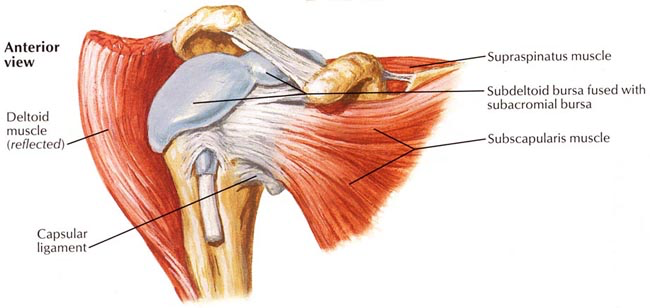
Shoulder arthroscopy is a surgical procedure in which an arthroscope is inserted into the shoulder joint. The benefits of arthroscopy are smaller incisions, faster healing, a more rapid recovery, and less scarring. Arthroscopic surgical procedures are performed on an outpatient basis and the patient is able to return home on the same day.
Arthroscopy may be recommended for shoulder problems such as:
Arthroscope is a small fiber-optic viewing instrument made up of a tiny lens, light source and video camera. The television camera attached to the arthroscope displays the image of the joint on a television screen, allowing the surgeon to look, throughout the shoulder- cartilage, ligaments, and the rotator cuff.
During arthroscopy small incisions around the joint area are made In one portal, the arthroscope is inserted to view the shoulder joint. Along with the arthroscope, sterile solution is pumped to the joint which expands the shoulder joint, giving a clear view and room to work. Other portals are used for the insertion of surgical instruments to probe various parts within the joint to repair the damaged shoulder.
Arthroscopy is much less traumatic to the muscles, ligaments and tissues than the traditional method of surgically opening the shoulder with long incisions (open techniques).
Following the surgery,. pain medications will be provided, bandage arounds the operated shoulder can be removed after 24 hours and dressings can be placed to cover the wounds. Slight swelling of the shoulder may be present after the surgery which is normal. Placing ice-packs on the shoulder for about 20 minutes, 3-4 times a day helps reduce the swelling. A follow-up visit should be scheduled 7-10 days after surgery to monitor your progress.
The surgeon makes small incisions around the joint area. In one portal, the arthroscope is inserted to view the shoulder joint. Along with the arthroscope, sterile solution is pumped to the joint which expands the shoulder joint, giving the surgeon a clear view and room to work. Other portal is used for the insertion of surgical instruments to probe various parts within the joint to repair the damaged shoulder.
Arthroscopy is much less traumatic to the muscles, ligaments and tissues than the traditional method of surgically opening the shoulder with long incisions (open techniques).
Following the surgery, your surgeon may recommend you to practice certain measures for better outcomes. Pain medications will be provided, bandage will be given around the operated shoulder which can be removed after 24 hours and dressings can be placed to cover the wounds. Slight swelling of the shoulder may be present after the surgery which is normal. Placing ice-packs on the shoulder for about 20 minutes, 3-4 times a day helps reduce the swelling. You can return to normal activities when you feel comfortable and a follow-up visit should be scheduled 7-10 days after surgery to monitor your progress.